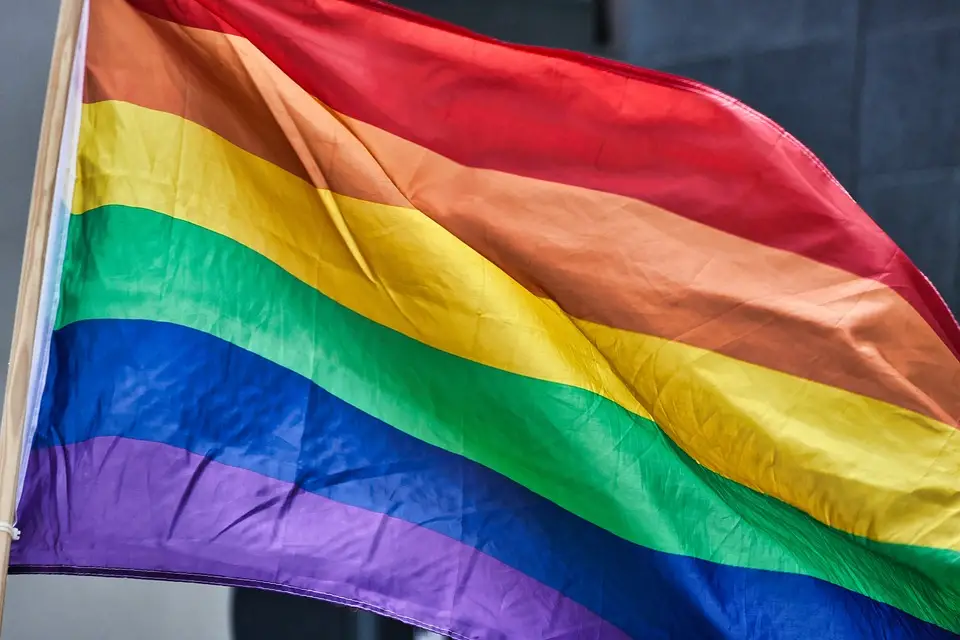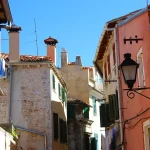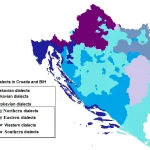Croatian LGBTIQ+ rights have expanded considerably over more recent years, with Gay Pride parades and associated events now generally taking place without much incident, which wasn’t the case at all several years ago. The Croatian Constitution defines marriage as being the union between a man and a woman, and this was determined by a referendum held back in November 2013. While this effectively prohibits same-sex marriage, the status of same-sex relationships in Croatia became formally recognised by the state much earlier (2003) and the introduction of the Life Partnership Act saw same-sex couples entitled to almost all of the rights enjoyed by married heterosexual couples in 2014.
With all this being said and looking half decent on paper, LGBTIQ+ individuals in Croatia still unfortunately have to deal with various challenges that heterosexual individuals don’t, both in a legal and social sense.
A brief history of Croatian LGBTIQ rights
After the Republic of Croatia became recognised as an independent state back during the early 1990s, there wasn’t any advancement in gay rights until the early 2000s when a centre-left coalition took power from the conservative, Christian democratic HDZ party. The coalition passed the aforementioned same-sex union law in 2003, giving full, legal recognition to same-sex relationships. This was an enormous breakthrough by Croatian standards, and it didn’t pass without quite some earthquakes (proverbial ones, of course).
Several laws and directives prohibiting any form of discrimination on the basis of sexual orientation, gender identity and self expression have also been introduced over the years. These include a penal code recognising hate crime based on gender identity.
When it comes to the protection of individuals other than gay men and lesbians who also fall under the LGBTIQ+ umbrella, the laws become more difficult to follow, and it does leave one scratching their head quite a lot. Gender transition is absolutely legal in Croatia and the law also allows for a person to change their name and all of the paperwork which would follow such a move. This law includes transgender persons who haven’t undergone gender affirmation surgery yet, or perhaps don’t plan to at all, which is a huge step. The rights of intersex people, however, have not yet been given legal protection in any way.
Constitutional amendments
With considerable help from the Catholic Church, a controversial lobby group called ‘U ime obitelji’ (In the name of the family) ran a very visible campaign against same-sex marriage during the year Croatia joined the EU (2013) in which, among other things, they called for a referendum to introduce changes to the national constitution. The changes they proposed would constitutionally define marriage as a union between a man and a woman, which I touched on above.
The outcome of that referendum was 65.87% of voters supporting the change to the constitution, and 33.51% opposing it. It is worth noting, however, that voter turnout was less than 40%, leading many civil rights groups, particularly those very focused on LGBTIQ+ issues, to point to the issue of the turnout threshold.
Croatia’s Life Partnership Act
Regardless of the aforementioned (and very fraught) campaign by U ime obitelji and its results, the following year, the Croatian Government went ahead and introduced the Life Partnership Act. This established registered civil partnerships, which saw same-sex couples granted equal rights to those of married heterosexual couples. One notable exception was that they wouldn’t be given the same adoption rights heterosexual couples enjoy, which may have seemed a bridge too far to the powers that be and has been a burning topic on a regular basis, especially over more recent years.
It has, all in all, been a mixed back indeed. But to say there hasn’t been a very marked shift since Croatia’s European Union membership would be a lie. A left-green coalition entered the Croatian Parliament for the first time in 2020, a great number of its members were from various different civil rights groups, and the coalition very openly supports Croatian LGBTIQ+ rights.
Pride events
The first Pride march happened in the City of Zagreb way back in 2002, taking a very profound place in modern Croatian history as the first high-profile LGBTIQ event ever in what was then a relatively new country. It had just 300 participants, and despite clear government support, they were met with verbal abuse and attempts at violence from homophobic crowds who had gathered on the streets solely to taunt and threaten those taking part. It is an enormous understatement to say that this, the first of many Pride events to hit Zagreb’s streets, did not go well. Despite the atmosphere, Pride continued every June in the Croatian capital, getting more and more public support and reporting less and less incidents with each and every passing year.
2011 rolled around, just two years before Croatia joined the EU, and Pride took to Croatia’s second biggest city – Split. Pride in Dalmatia’s largest city unfortunately ended in physical violence, with attackers significantly outnumbering the event’s actual attendees. The media and general public condemned the Croatian Government and the police for failing to adequately protect those marching from the homophobic crowds. A march of support was held in Rijeka, known as a very progressive city, that very same year.
The terrible events in Split marked a turning point for LGBTIQ+ activism across Croatia. While what happened never should have, it didn’t occur in vain as it prompted more public discussions on this issue which was deemed taboo in Croatia for a very long time than ever before. Shocked by the homophobic attacks on attendees, people who had once been passive bystanders at such events became active allies, determined to never be lumped in with people who would seek to harm others for simply wanting acceptance and to live their own lives how they so wish. More and more well known faces began attending Pride marches and speaking up for the LGBTIQ+ community.
Held just one week after Split Pride, Zagreb Pride in 2011 became the biggest Pride march up until that point. The event had grown considerably from its initial 300 marchers, it was promoted and backed by the media, as well as by some celebrities and Croatian politicians, and remarkably, it took place without any violence.
Then came 2013, the year Croatia joined the EU, and just before it, that year’s Zagreb Pride event. Many people who would otherwise have been passive bystanders grateful to not be affected by this issue readily joined it to express their opposition to the outcome of the referendum of November 2013 regarding the definition of marriage. With 15,000 participants marching and showing public support for LGBTIQ+ rights, it continues to be the biggest Pride event ever held in Croatia.
Croatian LGBTIQ+ organisations
There are a number of organisations dedicated to protecting and promoting the rights of various members of the LGBTIQ+ community all across Croatia. LGBTIQ+ centres exist in the large cities of Zagreb, Split and Rijeka.
The City of Zagreb is home to initiatives such as Zagreb Pride, Iskorak, Kontra, LGBTIQ Initiative AUT, qSPORT and the recently initiated Ponosni Zagreb (Proud Zagreb). Trans Aid protects the rights of trans, intersex and gender-variant persons. Dugine obitelji (Rainbow families) is primarily made up of LGBTIQ parents and those who wish to become parents.
Split Pride is known for their original approach to activism which includes amusing and sarcasm-filled videos uncovering, for example, the absurdity of mainstream reactions to the pride events. QueerANarchive works on developing the queer discourse in and around Split.
Rijeka is, as I mentioned, known for its progressive stances surrounding a whole host of social issues, and it is no coincidence that one of Croatia’s oldest LGBTIQ+ organisations, LORI, comes from here.
LGBTIQ+ tourism in Croatia
A bit of research placed Croatia as 39th on the list of 150 world’s most popular countries for LGBTIQ+ travel. While Croatia may not have a particular strategy for attracting LGBTIQ+ tourists as such, some 200,000 of them visit the country for touristic purposes each and every year.
Given the fact the country heavily relies on tourism as its source of income, with tourism being the strongest economic branch by far, the sentiment of the general public towards LGBTIQ+ individuals is a little more relaxed when it comes to tourists than it is when it comes to the locals. This isn’t necessarily to say that busy tourist destinations full of various nationalities and accommodation providers are more LGBTIQ+-friendly, they’re simply less concerned about who they provide their services to than they are about making their profit.
Renting out accommodation as a same-sex couple should generally not be a problem at all. Discrimination on the basis of sexual orientation and gender identity and expression is 100% illegal in Croatia. There were unfortunate cases of private landlords refusing to rent their properties to same-sex couples, and they got ripped apart for it by the media and nearly sank their only flow of income into the ground. Being homophobic and caring what others do in their bedrooms isn’t really the best business move in 21st century Europe.
Which destinations are the most welcoming to LGBTIQ+ tourists?
Rijeka is hailed as the most open city in Croatia and has been for a very long time. It is home to a very diverse range of people, and many more progressive people from other places across the country move to live there precisely because it appears, at least in some aspects, to be a step or two ahead of other cities. One of Croatia’s key port cities, the home of the torpedo (no, really) has always had a reputation of being a vibrant and diverse place despite its largely industrial past. The city’s slogan for the Rijeka – European Capital of Culture 2020 project was ‘Port of Diversity’ for a very good reason. Kvarner, the region in which Rijeka is located, and nearby Istria are both traditionally known as the most tolerant parts of Croatia, with most parts of Dalmatia still lagging behind.
The island of Rab, which markets itself as the ‘island of happy people’, lies in the very north of Dalmatia and is considered to be one of the first openly gay-friendly destinations in Croatia, holding the title since the 1980s, when it certainly wasn’t a popular thing to proclaim, however quietly. In 2011, this island which is known for its beaches officially became the first place in all of the Republic of Croatia to very openly promote itself as a gay-friendly tourist destination.
I mentioned that Dalmatia is still lagging in this area, and while that is true if you were to compare it with the likes of Rijeka and Kvarner, the City of Split is becoming increasingly open to different types of visitors. Dubrovnik is also among the most accepting destinations. Back in 2020, the first gay music festival was to be held at the world-famous Zrće beach on the island of Pag. It wasn’t homophobes who threw a spanner in the works in this case, but a global pandemic.
Public displays of affection and things to note
Gay is very much OK in Croatia on paper, and as time goes on, this is the case more and more in reality, too, but it is always best to exercise your judgement and pay attention to your surroundings. Major cities, especially the Zagreb, Kvarner and Istria areas, are generally more open, as is Dubrovnik in the extreme south. However, public displays of affection are still not common – even among the local LGBTIQ+ population, who are usually discreet when it comes to this. There are homophobes and hostile, ignorant people all over the world, and Croatia is unfortunately no exception.
If you’re planning to see some selos (villages), travel to more rural areas or head off the beaten path to some less frequented locations, have your wits about you and don’t engage in PDA too much.
If you do end up being faced with any sort of homophobic abuse, be it verbal or otherwise, do not hesitate to contact the local police. You’ll more than likely find more of an alliance than you might expect. This is especially the case if it comes from an accommodation provider. Report them.
To sum this article up, I’ve watched Croatian LGBTIQ+ rights over the last few years absolutely blossom. The vast majority of people in Croatia have no issue with what other people do. It wouldn’t be true to say that Croatia is at the level of certain other European countries such as the UK or Germany when it comes to acceptance levels, after all, this is a Catholic country with many people still identifying as religious, but it has certainly come on leaps and bounds, and that is likely to continue to be the trajectory.
For more on living in and moving to Croatia, as well as tips and tricks to avoid the crowds and save a kuna euro or two when it comes to things like renting cars, driving and hopping on the ferry during summer, make sure to check out our lifestyle section.











